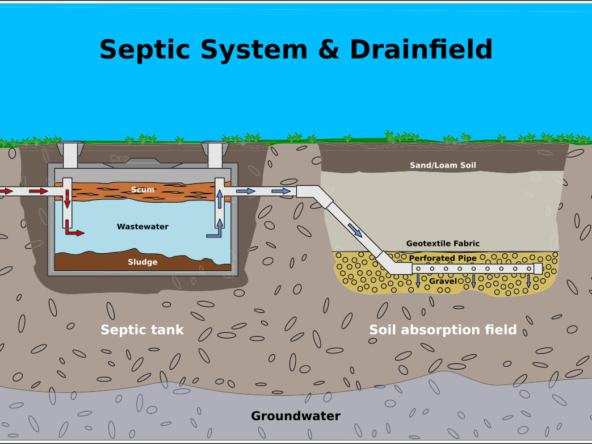Introduction
When it comes to purchasing a property, many homebuyers focus on factors like location, size, and aesthetics. However, for those considering a property with a well, there are additional aspects to consider. Owning a property with a well can offer numerous benefits, including self-sufficiency and potential cost savings on water bills. However, it’s crucial to be well-informed about the condition of the well before making such a significant investment. In this blog post, we will explore the importance of well inspections and the key aspects included in a comprehensive inspection. We will also discuss the significance of water testing and refer to the CDC’s guidelines on the matter.
Importance of Well Inspections
When buying a property with a well, a thorough well inspection is vital to ensure the quality and functionality of the water source. A well inspection provides valuable information about the well’s condition, identifying potential issues that may require repairs or maintenance. Here are some reasons why well inspections are crucial:
Water Quality: The quality of water from a well is of utmost importance to ensure the health and safety of the inhabitants. A well inspection can help assess the water quality by examining factors such as clarity, color, odor, and taste.
System Components: A comprehensive well inspection examines not only the well itself but also the associated components, including the pump, pressure tank, plumbing, and electrical connections. Identifying any faults or deficiencies in these components is essential to ensure the smooth functioning of the entire system.
Potential Contaminants: Wells are susceptible to various contaminants, such as bacteria, nitrates, heavy metals, and pesticides. An inspection can help detect the presence of such contaminants and provide recommendations for appropriate remedial actions.
Regulatory Compliance: Depending on your location, there may be specific regulations and codes governing the construction and maintenance of wells. A well inspection ensures that your well complies with local regulations, avoiding any legal or regulatory issues.
What’s Included in A Well Inspection?
A comprehensive well inspection involves several key components to evaluate the overall condition of the well system. The inspection typically includes:
Visual Examination: The inspector will visually assess the wellhead, well casing, and associated components. This includes checking for any signs of damage, corrosion, leaks, or inadequate construction.
Water Flow Test: A water flow test measures the well’s yield and recovery rate. It helps determine the well’s pumping capacity and assesses whether it can meet the household’s water demands adequately.
Water Quality Testing: Water testing is crucial to ensure the safety of the water supply. It involves analyzing water samples for parameters such as pH levels, bacteria, nitrates, lead, arsenic, and other contaminants. The CDC recommends regular testing to ensure the well water meets the safety standards outlined by the Environmental Protection Agency (EPA).
Pump and Pressure System Inspection: The inspector will examine the pump and pressure tank to ensure they are functioning correctly. They will check for leaks, pressure abnormalities, and verify that the system is adequately sized for the property’s water demands.
Electrical Assessment: The electrical components of the well system, such as wiring and connections, will be inspected to ensure they meet safety standards and are in good working condition.
Well Construction Evaluation: The inspector will evaluate the well’s construction, including the depth, casing condition, and sealing integrity. This assessment helps identify potential sources of contamination and ensures compliance with construction standards.
Water Source Location: The inspection may involve assessing the proximity of potential contamination sources, such as septic tanks, livestock areas, or chemical storage facilities. Evaluating these factors is crucial to determine the vulnerability of the well to contamination.
Water Testing and CDC Guidelines
Water testing is an integral part of a well inspection and helps ensure the safety of the water supply. The CDC provides guidelines for private well owners on the importance of water testing and the recommended frequency of testing. These guidelines recommend testing for various parameters, including bacteria, nitrates, pH levels, and contaminants such as lead, arsenic, and pesticides.
Regular testing is crucial, especially if there are any changes in the well’s surroundings, such as nearby construction, flooding, or the discovery of a new contamination source. The CDC suggests testing annually for bacteria and nitrates, and at least once every few years for other contaminants, depending on local recommendations and potential risks.
Conclusion
Buying a property with a well can be a rewarding investment, providing a self-sufficient water source and potential cost savings. However, it’s essential to conduct a comprehensive well inspection before finalizing the purchase. A thorough inspection, which includes water testing, ensures that the well system is in good condition and provides safe, quality water. Following the CDC’s guidelines for well water testing helps homeowners maintain a healthy water supply and protects their well-being. By being diligent in assessing the well’s condition and water quality, prospective buyers can make informed decisions and enjoy the benefits of owning a property with a well.
References:
CDC: Private Ground Water Wells: Testing and Interpreting Results – https://www.cdc.gov/healthywater/drinking/private/wells/testing.html
Tags: Sonoita and Elgin, Patagonia, Sierra Vista, Benson, Vail, Tanque Verde







